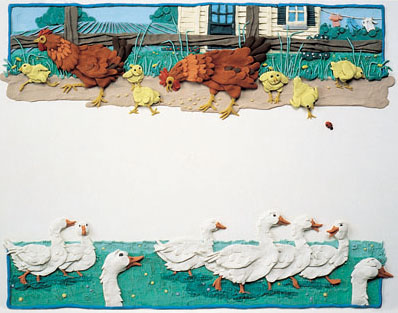Raphaëlle de Groot, artist (born 21 October 1974 in Montréal, Québec). This contemporary artist is nationally and internationally renowned. She received the Sobey Art Award in 2012 and represented Québec at the 55th Venice Biennale in 2013.
Education and Early Career
Raphaëlle de Groot holds a master’s degree in visual and media arts from the Université du Québec à Montréal (UQAM). From the very start of her career, she worked on a number of projects that raised sociological issues. Such issues would become a permanent feature of her art.
In Dévoilements (Unveilings) (1998–2001), the artist collaborated with nuns from the order of the Religious Hospitallers of Saint Joseph in Montréal. As the nuns drew objects from the congregation’s museum collection without looking at their hands, de Groot created portraits of the women while working under the same physical restriction.
For her project Colin-maillard (Blind Man’s Bluff) (1999–2001), during an exchange organized by the DARE-DARE centre in Montréal, the artist approached nine blind people in Montréal and Liège, Belgium, and asked them to draw objects—and sometimes even her own face—using touch as a guide. At the same time, de Groot “blindly” drew their portraits. Material traces of these creative sessions—drawings, the objects that were drawn, photographs of the sessions, etc.— were kept and later exhibited in galleries. The exhibits convey the many steps in a complex process of interaction between the artist and the Other as they deal with restrictions and discomfort.
Mid-Career
Since 2005, de Groot has gradually integrated active audience participation into her creative process by asking people who visit her exhibitions to take photos of her gallery performances or leave with pieces or material remnants of her installations. Her exhibitions are therefore not a final product or result cast in stone; instead they become part of the interaction between the artist and her audience.
In the case of En exercice (2006), spectators were encouraged to film segments of the artist’s performance over the course of several days. As de Groot tried to perform a variety of exercises while imposing various physical restrictions upon herself, members of the public produced their own records of their interaction with the artist. For L’art d’accommoder les restes (The Art of Accommodating Leftovers) (2008), de Groot worked with artists from the École supérieure des beaux-arts de Cornouaille in Quimper, France. She asked them to collect, select, and review artistic materials left over from their previous works. The scraps that survived the process were then exhibited at Le Quartier, a contemporary art centre in Quimper, and made available to the public.
De Groot sometimes reuses the material remains from her social and creative performances and experiments in other projects. In Portraits de clients (2007), de Groot created portraits of former customers of a closed-down bank, using descriptions from old identification forms read aloud by visitors. In Il volto interiore (The Face Inside) (2007), she used participants’ descriptions to produce portraits on a sheet of white paper covering her face. The portraits from these two projects were later brought back in Tous ces visages (All These Faces) (2007–2008). The installation included remnants of the earlier experiments (drawn or painted masks, videos and photographs of interactions with participants) that recounted the steps of a long-term process of reflection on the unattainable and the limitations of vocabulary.
Recent Work
In 2013, de Groot began a project that involved reinterpreting, reappropriating, and modifying materials left over from seven years’ worth of performances. In Stock (2013), she created an installation from debris and fragments. The same year, during her performance of En exercice à Venise at the 55th Venice Biennale, she used remnants to construct a costume that restricted her movements and a mask that covered her eyes. In a gondola and on foot, she made her way through the Italian city, a much more unpredictable and confusing environment than her usual restricted and controlled performance venues. De Groot interacted with a much larger number of participants, many of whom were not necessarily willing members of the exchange. Her more recent creations reflect an attempt to incorporate material remnants of her work, as well as her own body-as-actor, into larger-scale environmental, narrative, and relational contexts.
Honours and Awards
De Groot has exhibited multidimensional installations, given interactive performances in a number of group exhibitions (such as the 2008 Québec Triennial), and put on individual exhibitions at a number of Montréal galleries and international festivals. She won the Pierre-Ayot Award in 2006 and the Sobey Art Award in 2012. She is represented by the Graff Gallery in Montréal and the Z2O Galleria–Sara Zanin in Rome. Since 2008, she has occasionally worked as a sessional lecturer at UQAM, teaching visual and media arts.

 Share on Facebook
Share on Facebook Share on X
Share on X Share by Email
Share by Email Share on Google Classroom
Share on Google Classroom


